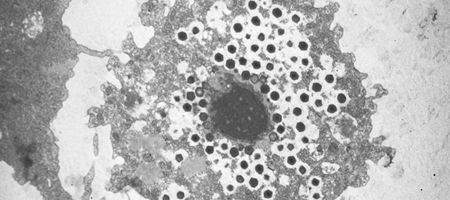Viruses are ancient living organisms and not inanimate molecular remnants, new research indicates, and should be regarded as a fourth major branch of life.

Rather than comparing genetic sequences, which are unstable and change rapidly over time, the University of Illinois researchers looked instead at the three-dimensional, structural domains of proteins.
These folds are relatively stable molecular fossils that offer clues to ancient evolutionary events, says professor Gustavo Caetano-Anollés. Some appear only in one group, while others are common to all organisms studied so far.
“We make a very basic assumption that structures that appear more often and in more groups are the most ancient structures,” he says.
Most efforts to document the relatedness of all living things have left viruses out of the equation.
“We’ve always been looking at the Last Universal Common Ancestor by comparing cells,” says Caetano-Anollés. “We never added viruses. So we put viruses in the mix to see where these viruses came from.”
The researchers trawled through all the protein folds occurring in more than 1,000 organisms representing bacteria, viruses, the microbes known as archaea, and all other living things. They included giant viruses because they are large and complex, with genomes that rival – and in some cases exceed – those of the simplest bacteria.
“The giant viruses have incredible machinery that seems to be very similar to the machinery that you have in a cell,” says Caetano-Anollés. “They have complexity and we have to explain why.”
Part of that complexity includes enzymes involved in translating the genetic code into proteins – a surprising find, since viruses lack all other known protein-building machinery and commandeer host proteins to do the work for them instead.
In the new study, the researchers mapped the evolutionary relationships between the protein endowments of hundreds of organisms and used the information to build a new universal tree of life.
This tree had four clearly differentiated branches, with giant viruses appearing alongside bacteria, archaea and eukarya.
Many of the most ancient protein folds – those found in most cellular organisms – were also present in the giant viruses, suggesting that these viruses appeared quite early in evolution.
The new analysis adds to the evidence that giant viruses were originally much more complex than they are today and experienced a dramatic reduction in their genomes over time – likely explaining their eventual adoption of a parasitic lifestyle.
“This study offers more evidence that viruses are embedded in the fabric of life,” says Caetano-Anollés.






